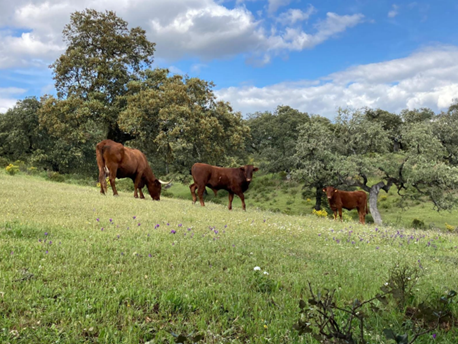- Agro-sylviculture
- Forest farming
According to the FAO “Agroforestry is the collective term for land-use systems and technologies in which woody perennials (e.g. trees, shrubs, palms or bamboos) and agricultural crops or animals are used deliberately on the same parcel of land in some form of spatial and temporal arrangement”.
Agroforestry systems have the potential to retain between 50% and 80% of the biodiversity found in natural forests. This agricultural practice integrates trees with crops and livestock, using diverse land management systems that have been practised around the world for centuries. Today, agroforestry is recognised for its ability to transform agri-food systems, making them more adaptable and resilient.
There are five primary spatial agroforestry practices: silvopastoral, silvoarable, forestry, hedgerows, windbreaks and riparian buffers, and home gardens. Silvopastoral systems combine trees and shrubs with fodder and livestock production. Silvoarable systems intersperse trees and shrubs with annual or perennial crops. Silvopastoral systems use forest land to produce or harvest specialty crops for medicinal, ornamental or culinary purposes.
Agroforestry makes a significant contribution to water retention by integrating deep-rooted trees into agricultural systems. These trees improve soil structure, increase organic matter and improve the soil's ability to absorb and retain water. This reduces surface run-off and erosion, maintains soil moisture levels and promotes a more stable and resilient agricultural ecosystem. In addition, the creation of a multi-layered canopy in agroforestry systems reduces evaporation rates and provides shade, further helping to conserve water across the landscape.
In addition, agroforestry promotes hydraulic redistribution, where tree roots redistribute water within soil profiles. This process increases water availability for both crops and surrounding vegetation, ensuring more efficient use of water resources.
